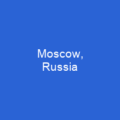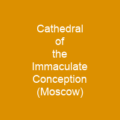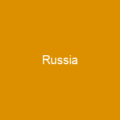Moscow: The Heart of Russia
Imagine a city that has seen the rise and fall of empires, where history whispers through its cobblestone streets and modernity pulses in its bustling heart. Welcome to Moscow, the capital and largest city of Russia, standing proudly on the Moskva River with over 13 million residents within its limits.
The Name Game
From the ancient forms that came before, the name Moscow has evolved into a symbol of Russian pride. The modern Russian name Moskva, derived from morphological generalization with numerous Slavic ā-stem nouns, carries within it centuries of history and culture.
A City of Epithets
Is Moscow the Third Rome? That’s a question that echoes through time. This city has earned its epithets not just from its grandeur but also from its resilience and strategic importance throughout history.
The Historical Journey
Moscow’s story begins in prehistoric times, with relics of the Lyalovo culture confirming the presence of early inhabitants as hunters and gatherers. By 950 AD, two Slavic tribes, Vyatichi and Krivichi, had settled here, laying the foundation for what would become a city of immense importance.
From Minor Town to Capital
The first known reference to Moscow was in 1147 as a meeting place. It grew from a minor town on the western border of Vladimir-Suzdal Principality into a major center under the rule of Yuri Dolgorukiy, who fortified it with a wooden wall that would later become the Kremlin.
The Mongol Invasion and Beyond
Despite the devastation brought by the Mongols in 1237-1240, Moscow rose to prominence. Grand Duke Daniel of Moscow established it as a prosperous city, leading to its eventual eclipse of its parent principality of Vladimir.
The Golden Age and Beyond
Under Ivan III, Moscow became the capital of Russia, conquering Novgorod and building new Kremlin walls designed by Italian architects. The city’s growth continued through the 17th century, with significant events like the Russian famine of 1601-1603 and the Polish-Lithuanian occupation in 1610-1612.
The Modern Era
From the 18th to the early 20th century, Moscow saw significant changes. Catherine II implemented plans for improved sanitation, while Peter the Great moved his government to St. Petersburg, leading to a decrease in population until the city’s resurgence after World War I.
The Soviet Era and Beyond
During the Soviet era, Moscow faced numerous challenges but also saw growth and development. The city was surrounded by a barricade and had permanent street lights installed. Despite economic growth, crime and corruption still hinder business development in Moscow today.
A City of Culture and Innovation
Moscow is not just about history; it’s a vibrant hub for culture, entertainment, and innovation. The city hosts numerous theaters, ballet studios, cinemas, and museums like the Tretyakov Gallery and Pushkin Museum of Fine Arts. It also boasts an extensive network of elevators and over 500 Olympic sports champions.
Education and Research
Moscow is home to some of Russia’s top universities, including Lomonosov Moscow State University and Bauman Moscow State Technical University. The city has one of the largest municipal economies in Europe, accounting for over a fifth of Russia’s GDP.
The Future of Moscow
As Moscow continues to grow and evolve, it faces challenges such as urban sprawl and traffic congestion. However, initiatives like the Moscow Metro expansion and the development of new transportation networks aim to address these issues while preserving its rich cultural heritage.
Moscow is a city that has seen it all—empires rise and fall, wars and peace, and through it all, it stands as a beacon of Russian culture and innovation. Its future is bright, with plans for continued growth and development, making it an exciting place to explore and call home.

You want to know more about Moscow?
This page is based on the article Moscow published in Wikipedia (retrieved on March 11, 2025) and was automatically summarized using artificial intelligence.







